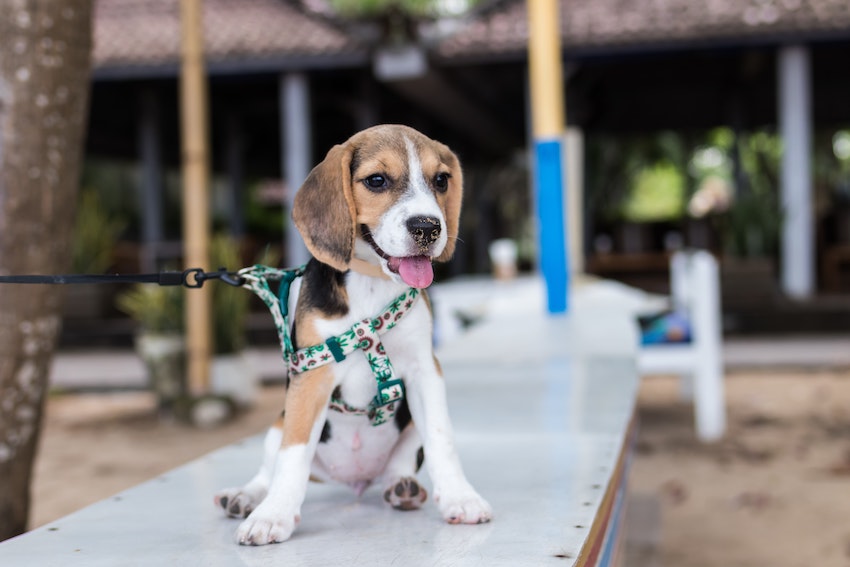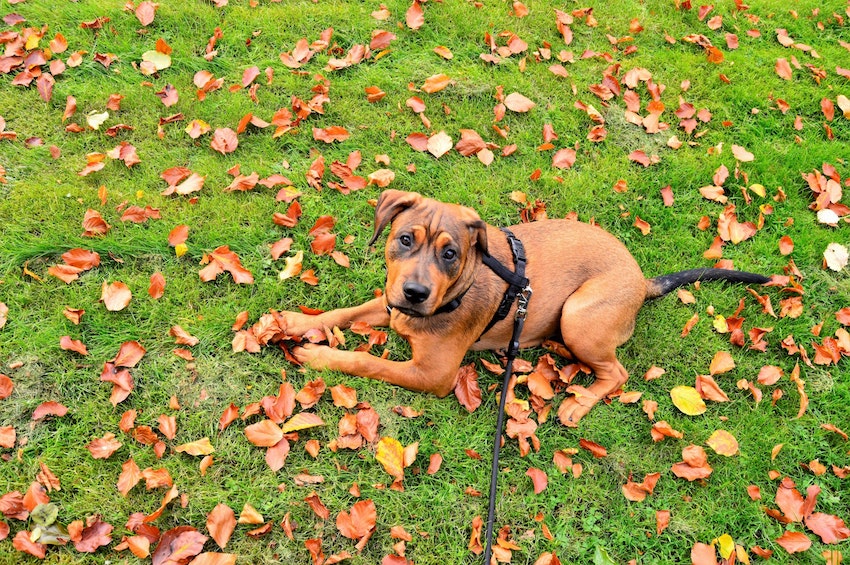“My dog pulls on a leash!”: How many times have you said this to friends or fellow walkers? The dog has a very special relationship with this object: as soon as he sees it, it becomes excited, and begins to yap for his daily walk with his best friend. But what happens as soon as you go down the road? Your dog pulls on the leash, often strongly: it is estimated that at least 60% of dogs do this, especially at a young age, and, the motivations are different, but simple. Let’s look at them together!
Why does the dog pull on a leash?
When pulling, the dog generally demonstrates his desires and curiosity, guided by instinct and smells; or when enthusiastic about time spent outdoors with you. But let’s get more specific: first, if it is a lively and dynamic breed dog, such as a setter, it will probably pull vigorously on the leash. Age is also an important factor: puppies are full of energy.
From a psychological point of view, however, a dog on a leash is more insecure and more aggressive, because it knows that it can count on its master when seeing other dogs; this is particularly the case if it is shy or fearful. These dogs, therefore, will pull harder, to drag the owners towards the other dogs, trying to attack first.
Also be careful with the length of the leash you use: the shorter the leash, the more the dog will feel hunted, with no escape route, thus becoming more aggressive.

When educating walking dogs, you should aim to make your four-legged friend safer and more relaxed: only in this way will it be more polite and stop playing tug of war with us! As a result, let’s try to focus precisely on the use of the leash as a tool, which will have to be softer, or more tense, depending on the situation.
There are two methods that can be adopted to train the dog on a leash:
- When your dog starts pulling, just stop, or slow down the pace, so that the leash becomes looser and less tense. The dog, therefore, will stop with us, looking at us to check what´s happening. Just stay like this for a few more seconds, and start again, repeating this exercise during the walk if necessary. This is a great method for puppies!
- The second technique, a little more sophisticated and suitable for older dogs, always involves stopping, giving the dog the command “sit!”, waiting for a few seconds and… changing the walking route. Next, reward your four-legged friend with a snack as soon as it follows you.
Both techniques are simple, effective, and respect the animal absolutely; Moreover, they can be comfortably carried out at home, as a game on those gloomy days where we can’t go out with our dogs. There is a very simple physical law governing these minor rules that help us to correct dogs pulling on a leash: the contrary reaction. Does the dog pull? Try to soften the firmness of your grip: this will help him to understand that he should be walking in a more relaxed way, with less anxiety.
Things you should never do when the dog pulls on a leash
Walking should be leisurely, and not create anxiety for the owner and his animal. Paying attention to the tone of voice and, above all to gestures, is really important. Therefore, a loud voice, tug-of-war and raised hands should be avoided. The consequences of such aggressive behaviour are definitely predictable: the dog will see each walk as stressful and intimidating, and not as a moment of relaxation and sharing.
If your dog pulls on a leash, it is probably because it fears being scolded: it will, therefore, want to move away from elements making it anxious.
Dog on a leash: it’s required by law!
The Ministry of Health has issued a law, followed by some periodic ordinances, establishing general rules relating to the “protection of public safety from the aggression of dogs”: it is a law that is often extended and revised with new elements, so it´s a good idea to read it. The last order was issued by the Ministry on 13. July 2016 and published in the Official Journal on 7. September of the same year.
This law includes the important regulation that also defines the length of the leash: this can’t have an extension length of more than 1.50 metres. Try using extendable leashes: they can be used without problems, and especially with small and very small dogs, but only at this length as determined by law.
In addition, the law issued by the Ministry prohibits you from walking your dog without a leash, except for the special areas dedicated to dogs, where our best friend can roam freely. The important thing is not to lose sight of it, to ensure its safety and security, also for other dogs and those who share the environment with us!
Is there a specific leash for pulling dogs?

No, there is no specific leash for dogs that pull. And most importantly, collars known as “chokes,” or chains can cause the initial stages of behavioural aggression in dogs. Pay attention to the shape of the collar, its length and softness: it can cause serious physical damage if used without thinking or if left at the mercy of the dog.
In particular, we should reject the old belief that the choke leash can make the dog more docile and friendlier during walking: the ‘strangolo’ collar is a safety collar, since its task is to prevent the dog from pulling too much, used especially in situations of re-education or training. As a result, it is good to avoid it in daily use!
Putting these little tricks into practice with your dog on a leash and educating it in the nicest and most effective way makes every walk a moment of pleasant sharing and leisure with your best friend, without any danger arising.
